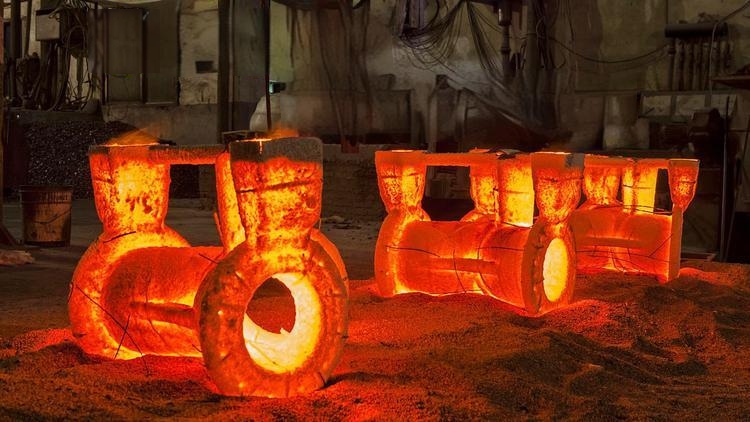Why Is Investment Casting Expensive? A Deep Dive into the Cost Logic of Precision Manufacturing
2025-04-02 16:10:28 hits:0
Have you ever wondered why investment casting costs 5-8 times more than sand casting when receiving a quotation? This article explores the technical value behind investment casting's "high prices" from three dimensions: material science, process complexity, and quality requirements.

I. Material Costs: The "Noble Lineage" of High-Melting Alloys
Scarcity of Superalloys
Investment casting commonly uses materials like Inconel 718 (nickel-based alloy) and Ti-6Al-4V (titanium alloy), which cost 3-5 times more than ordinary steel.
Nickel-based alloys require vacuum induction melting (costing $20/kg) with oxygen content controlled below 20ppm.
Material Utilization Paradox
Although near-net shaping saves 90% material (compared to 40% for traditional machining), raw material costs remain high.
Example: A 1kg titanium casting requires 1.1kg raw material (including runners).
II. Process Costs: Precise Control of 7-Step Workflow
Key Cost Drivers:
| Process Step | Cost Share | Technical Requirements |
|---|---|---|
| Wax Pattern Making | 15% | Aluminum molds ±0.01mm precision, 3D-printed wax $500/unit |
| Ceramic Shell Preparation | 25% | 7-9 manual slurry layers, sintering energy $0.8/kWh |
| Vacuum Casting | 20% | ≤10Pa vacuum, melting electricity $0.3/kWh |
| Quality Inspection | 15% | CT scan $200/unit, tensile test $150/test |
Time Costs:
15-20 days production cycle (vs. 3-5 days for die casting), low capital turnover
Fixed costs 分摊 for small batches (e.g., $10k-$50k mold fees)
III. Quality Costs: The Price of Aerospace-Grade Standards
Stringent Defect Control
Porosity must be <0.5%, requiring HIP treatment if exceeded ($50/unit additional cost)
Ra1.6μm surface finish requires triple blasting
Certification Costs
AS9100D aerospace certification annual maintenance: $50k
Medical-grade ISO 13485 biocompatibility testing: $20k/project
IV. Comparative Analysis: Why High Costs Remain Competitive
Cost-Value Matrix:
| Evaluation Dimension | Investment Casting | Sand Casting |
|---|---|---|
| Unit Cost | $500-$2000 | $100-$300 |
| Post-Processing Cost | $0 (near-net shape) | $300-$800 (machining) |
| Scrap Rate | 8-12% | 20-30% |
| Product Lifespan | 10,000 hours (aerospace) | 3,000 hours (general) |
Case Study:
A turbine blade project achieved 35% cost savings compared to machining (material savings + extended lifespan)
V. Cost Optimization Trends
Technological Innovations
3D-printed wax patterns: 80% mold cost reduction, 5-day prototyping
Automated shelling: 30% labor cost reduction
Economies of Scale
Unit cost decreases 40% at >10,000 annual units
Medical implant manufacturer reduced 30% fixed costs via shared molds
VI. Tiegu's Cost Control Solutions
Vertical Integration Advantages
In-house vacuum furnaces and automated shelling reduce outsourcing costs by 25%
Proprietary wax formula cuts shrinkage from 0.6% to 0.4%, lowering scrap rates
Data-Driven Optimization
ProCAST simulation reduces trial runs from 5 to 2
Machine learning optimizes pouring parameters, achieving 92% yield
Conclusion: The Value of Precision Behind High Prices
Investment casting's high costs represent investments in extreme precision and complex functionality:
✅ 0.1mm thin-wall turbine blades boost engine efficiency by 20%
✅ Ra1.6μm medical implant surfaces promote bone cell growth
✅ 1200℃-resistant coatings extend industrial equipment lifespan 3x

 en
en  fra
fra  de
de  ru
ru  gle
gle  th
th  ara
ara  it
it  jp
jp  kor
kor  zh
zh 


